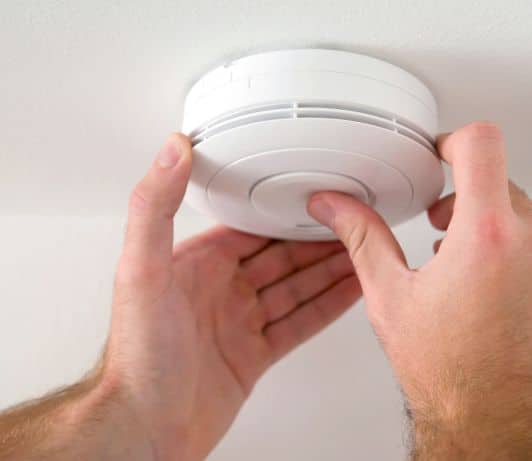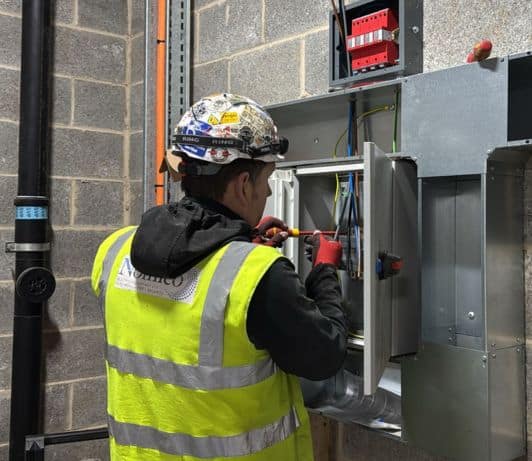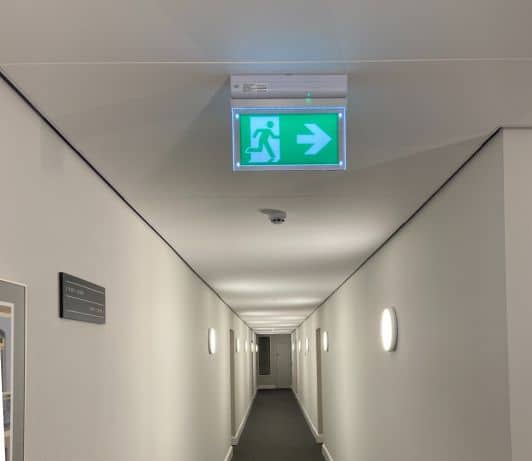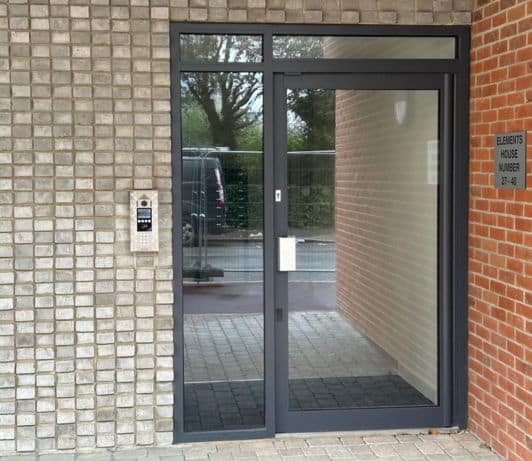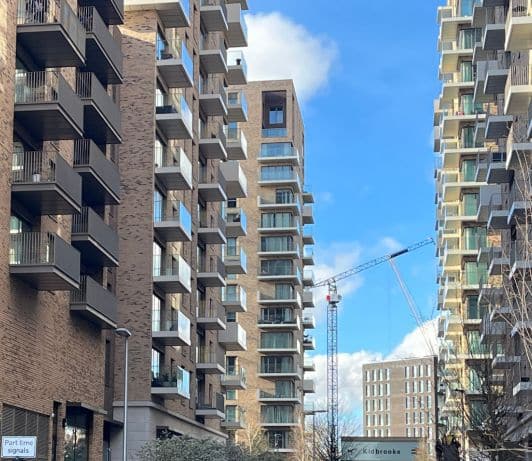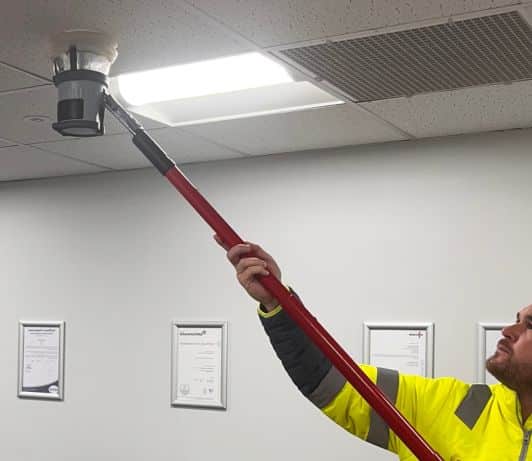Understanding Fire Extinguishers’ Types, Uses, And Maintenance Requirements
Fire extinguishers are one of the most vital tools for fire safety and can play an integral role in saving lives. These fire suppression tools can reduce the impact of fires, preventing property damage and keeping people safe during emergencies when installed correctly.
To ensure that your home or business is protected from fire risks, you need to understand the various types, applications, and maintenance needs of fire extinguishers. This ensures that your premises have the right type of fire suppression tools available and all occupants are educated in the correct use so they can act fast during an emergency.
Nomico Fire & Security is a leading provider of fire extinguisher installation and maintenance. With our skills and experience, we are sharing everything you need to know about fire extinguishers so you can keep yourself safe, whether at home or work.
Why Are Fire Extinguishers So Important?
Before we move into the various applications and maintenance needs for fire extinguishers, we first need to explore how important these tools are for fire safety.
There are various ways you can protect yourself and your property from fire, including fire alarms, smoke ventilation and fire extinguishers. Fire extinguishers are such a valuable tool for a range of properties and locations because they are fire suppression devices, which means they actively combat flames and the damage they can cause.
While fire alarms and smoke detectors will alert you to the first signs of a fire, fire extinguishers allow you to reduce the spread of the flames to prevent property damage, injuries and even loss of life. They are ideal for small fires or flames in early stages, depending on the location, and should be installed in a range of environments for ongoing protection.
Types of Fire Extinguishers: Finding The Best Fit
There are several types of fire extinguishers, each providing its own form of fire suppression. The type of suppression these tools provide will determine their best application and whether they are required within your home or business.
At Nomico Fire & Security, we can provide a range of fire extinguishers to suit your needs, including:
- Water Extinguishers: These fire extinguishers use water to reduce the spread of flames and are ideal for Class A fires, which refer to wood, paper, and textiles.
- Foam Extinguishers: One of the most common kinds of fire extinguishers, which have a wide application, as they can be used for both Class A and B fires. Class B fires refer to those caused by flammable liquids.
- CO₂ Extinguishers: Another common form of fire extinguisher across the UK, as they can be used in both residential and commercial settings. Fire suppression through CO2 is ideal for Class B and electrical fires.
- Dry Powder Extinguishers: These fire extinguishers are multi-purpose, as the dry powder can suppress all kinds of flames. They are most suitable for Class A, B, and C fires.
- Wet Chemical Extinguishers: These suppression tools are used for fires caused by cooking oils and fats, which are known as Class F fires. These are commonly found in residential kitchens, such as in apartments or flat shares, as well as in commercial kitchens and cooking areas.
How To Use A Fire Extinguisher Properly
Even with the right fire extinguishers installed across your home or business, you are not necessarily protected from fires. To ensure you are protected in times of need, you must know how to use fire extinguishers properly and provide necessary training to staff and occupants.
While there are various forms of fire extinguishers, each one operates in a similar manner. The best process for fire extinguishers is known as the PASS method:
- Pull the pin at the top of the fire extinguisher to unlock the operating lever so you can discharge the fire suppression powder or liquid.
- Aim the nozzle or hose of the extinguisher at the base of the fire. You must aim for the source of the flames, not the flames themselves, to extinguish the fire effectively.
- Squeeze the handle slowly and evenly to release the liquid or powder. By maintaining control, you avoid wasting the contents and ensure that everything within the extinguisher is going toward suppressing the fire.
- Sweep the nozzle from side to side across the base of the fire until it is completely out. Once the flames have gone, continue this motion to avoid reignition.
This process should be shared with all staff and occupants and become part of regular training. Everyone in the home or business needs to know how to use fire extinguishers effectively to reduce the risk of property damage, injuries and even fatalities from fire outbreaks.
Include fire extinguisher training as part of your regular fire drills to ensure that people remain informed of the best processes.
Fire Extinguisher Maintenance And Inspections: Keeping The Premises Safe
As with all fire and security tools, fire extinguishers need to be regularly maintained to ensure they are in optimal working order. Without these maintenance tests, your property may still be at risk even with the presence of these fire suppression tools because they may no longer work or operate as required.
Not only is the installation and maintenance of fire extinguishers good for peace of mind, but it is also a legal requirement in many properties across the UK. Workplaces and certain premises are required by law to have working fire extinguishers. Failure to provide these can put staff, occupants and properties at risk as well as exposing you to legal fines or even criminal sentences based on the severity.
Professional Testing And Annual Inspections
At Nomico Fire & Security, we can provide comprehensive servicing and maintenance of all fire extinguishers. We also offer fire risk assessments, fire alarm testing, and maintenance of other fire tools to keep you safe.
During these professional annual checks of fire extinguishers, we ensure that all devices are in correct working order and in line with current regulations. We will provide a recertification for existing fire extinguishers that pass the test, as well as provide the necessary documents regarding installation for new fire extinguishers to support your premises.
Based on the type of fire extinguishers used in your premises, we can also recommend the right replacement time and keep you compliant across the years.
Regular Checks For Compliance And Functionality
While these annual tests should be carried out by professionals, like our team, there are smaller and more frequent ways you can maintain your fire extinguishers. These include regular, often solely visual checks to determine whether the extinguishers are still in date and fully operational.
Several main areas of fire extinguishers should be inspected during these regular tests, including:
- Pressure Gauge: Check that the needle on the pressure gauges of all fire extinguishers is within the green zone. A needle in the red zone can increase the risk of under-pressure, which means the extinguisher will not discharge properly, or over-pressure, which comes with a risk of rupture. Both need to be addressed by professionals to ensure ongoing safety.
- Signs of Damage or Corrosion: Visually examine the fire extinguisher cylinder for signs of damage, such as dents, cracks, and rust. During this visual inspection, ensure that the handle, pin and tamper seal are still intact, and check for any blockages or deformations within the nozzle and hose.
- Expiration and Maintenance Dates: Check both the manufacturer’s expiration date on the fire extinguisher, as well as the last serviced date, which should be provided by all engineers following an inspection. All inspections and replacements should be done on time to avoid issues and keep your premises safe.
- Accessibility and Visibility: During your regular checks, make sure that the fire extinguishers are in the designated location and are easily accessible. This means removing any blockages, such as furniture, equipment or other objects which may be hindering access to the fire extinguisher.
- Weight Check: This is a simple check which requires you to pick up the fire extinguisher to confirm that it feels full. If the extinguisher feels significantly lighter, this could indicate that it has leaked and may now be ineffective. In most cases, a complete replacement of the affected fire extinguishers is the best option.
Conclusion
Fire extinguishers can be one of the most vital tools for fire safety, as long as they are installed and maintained correctly. These fire suppression tools can successfully reduce the risk of property damage, injury and even a threat to life when used correctly, which is why ongoing training and maintenance are so important.
Nomico Fire & Security is your local fire safety expert, and we offer a comprehensive fire extinguisher service. From installing these tools for the first time to providing annual inspections and ensuring ongoing compliance, we are here to keep homes and businesses across the region safe.
Contact Us Today
To learn more about our services or to request a consultation with our engineers, please contact us today.
FAQs
How often should fire extinguishers be inspected?
Monthly visual checks and annual professional inspections are recommended to ensure compliance and functionality of fire extinguishers.
Can one type of fire extinguisher handle all fires?
No – different types of fires require different fire extinguishers, which are categorised by the kind of fire source they can handle. Using the wrong fire extinguisher to handle your fire can be incredibly dangerous.
Where should fire extinguishers be installed?
Fire extinguishers should be easily accessible, no matter where they are placed. Some of the best locations for fire extinguishers include near exits and in high-risk areas such as kitchens and electrical rooms.
How do I know if a fire extinguisher is still working?
Check the pressure gauge to ensure it is not in the red zone; inspect the cylinder for signs of damage or rust, and look at the dates of both the manufacturer’s expiration and the last serviced to check your fire extinguishers are still functional.

